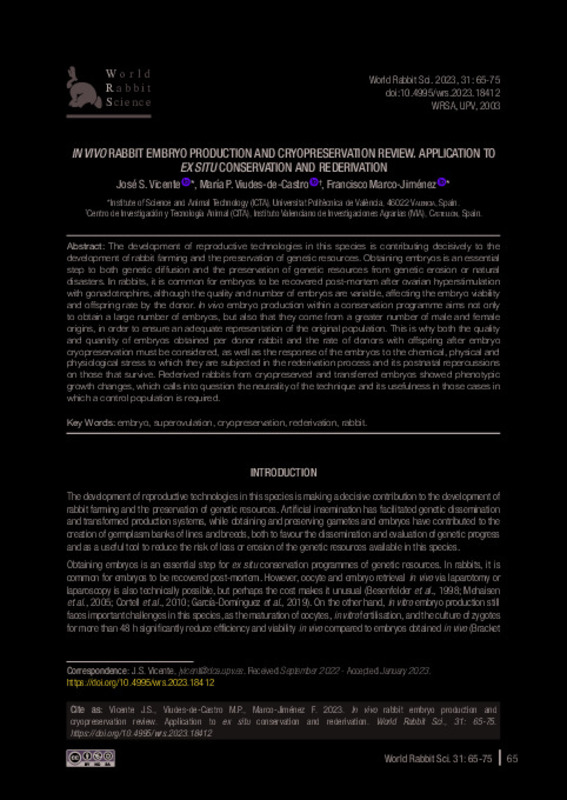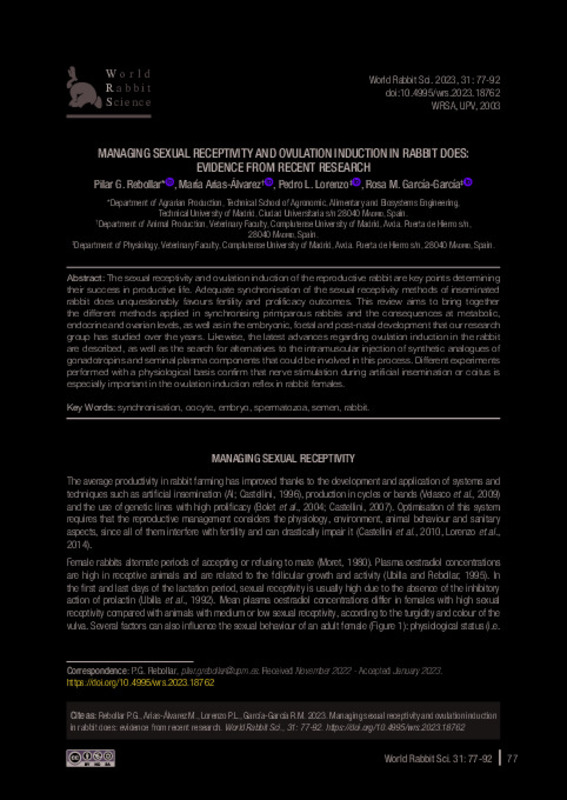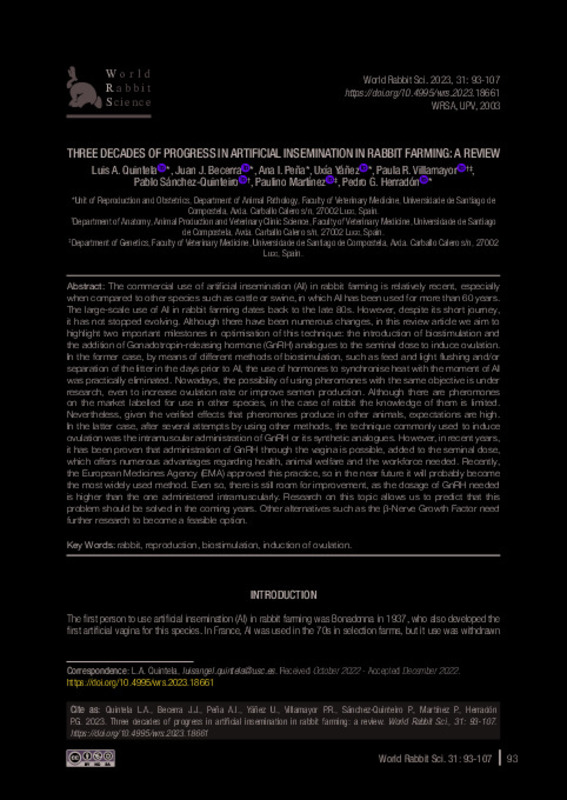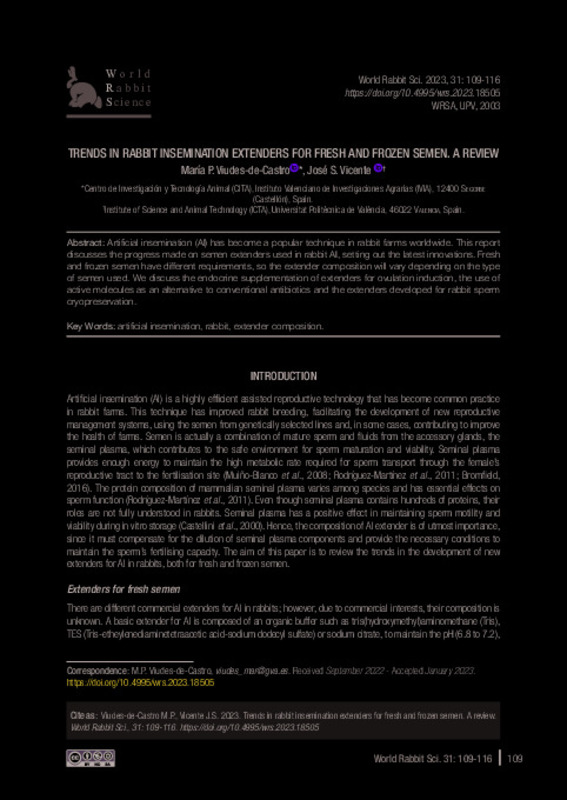- RiuNet repositorio UPV
- :
- Investigación
- :
- Material investigación. Editorial UPV
- :
- Revistas UPV. Editorial UPV
- :
- World Rabbit Science
- :
- World Rabbit Science - Vol. 31 (2)-2023: Special Issue in Reproduction
JavaScript is disabled for your browser. Some features of this site may not work without it.
Refinar
World Rabbit Science - Vol. 31 (2)-2023: Special Issue in Reproduction
Tabla de contenidos
Reproduction
- In vivo rabbit embryo production and cryopreservation review. Application to ex situ conservation and rederivation
- Managing sexual receptivity and ovulation induction in rabbit does: evidence from recent research
- Three decades of progress in artificial insemination in rabbit farming: a review
- Trends in rabbit insemination extenders for fresh and frozen semen. A review
- Environmental and genetic factors affecting litter size components in rabbits
- Effect of an extender enriched with algerian date palm pollen on chilled semen characteristics of rabbit bucks at different ages









